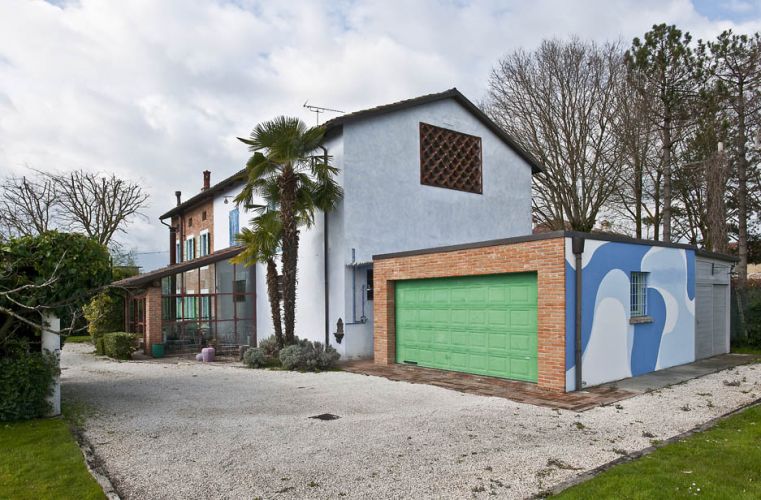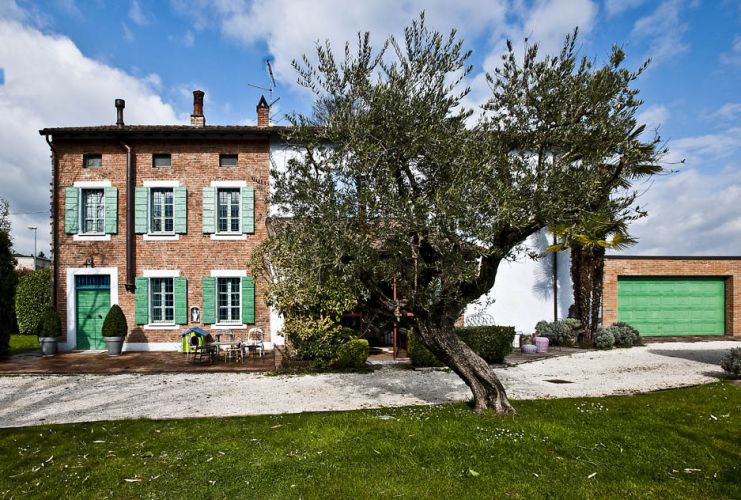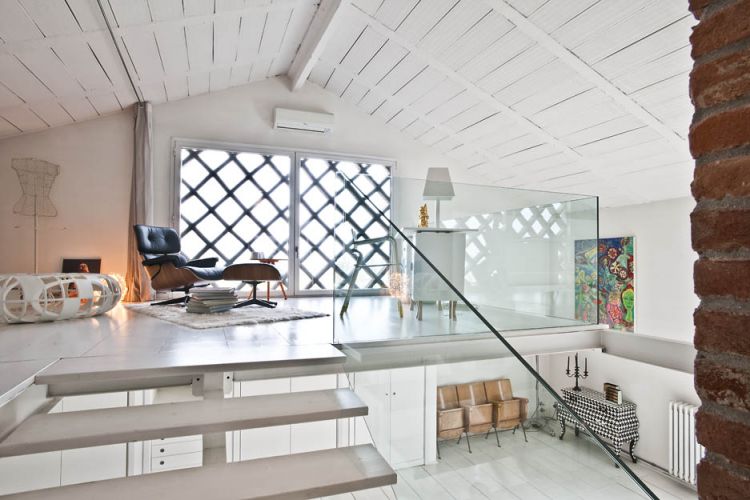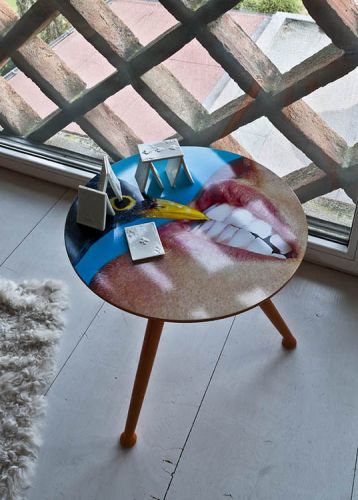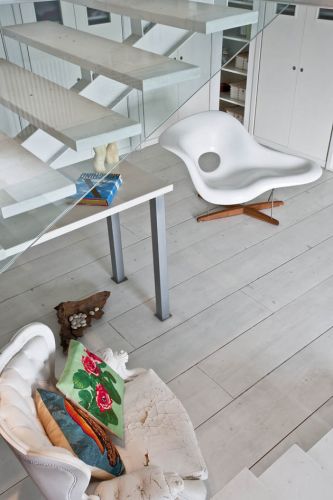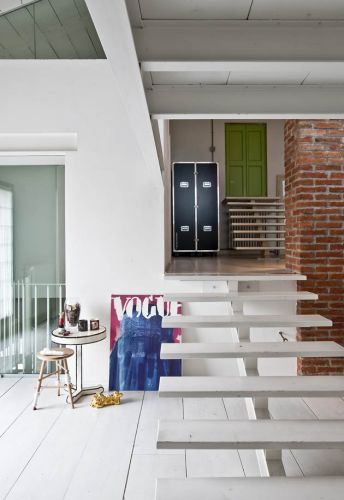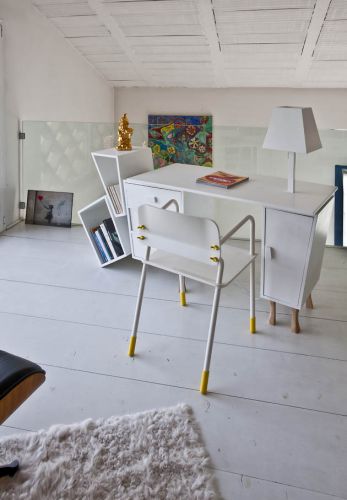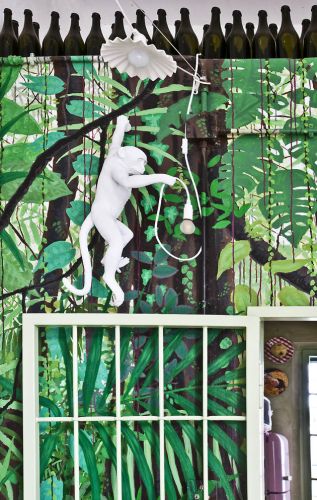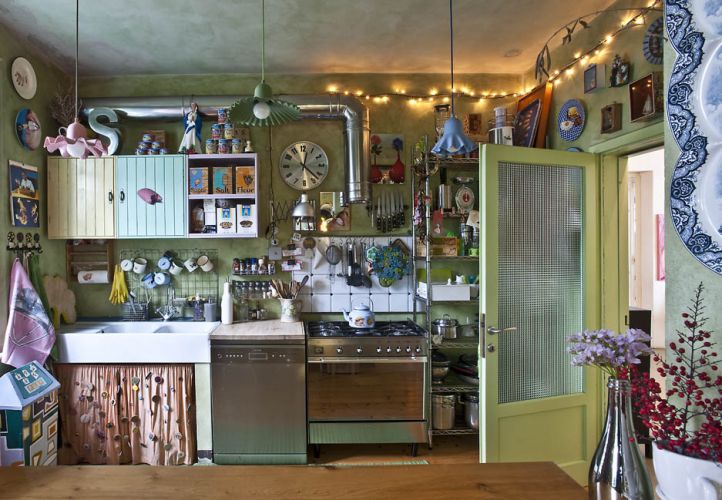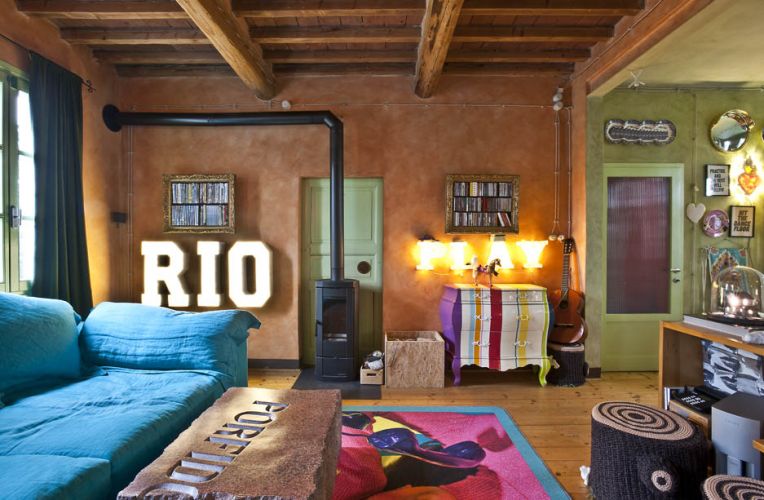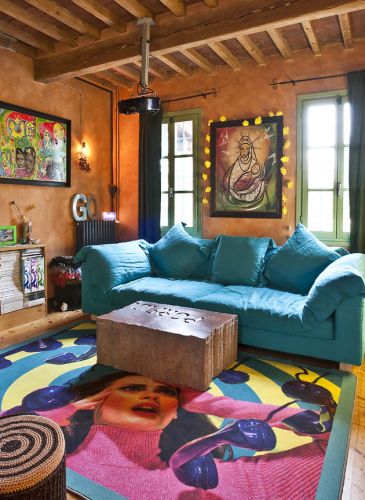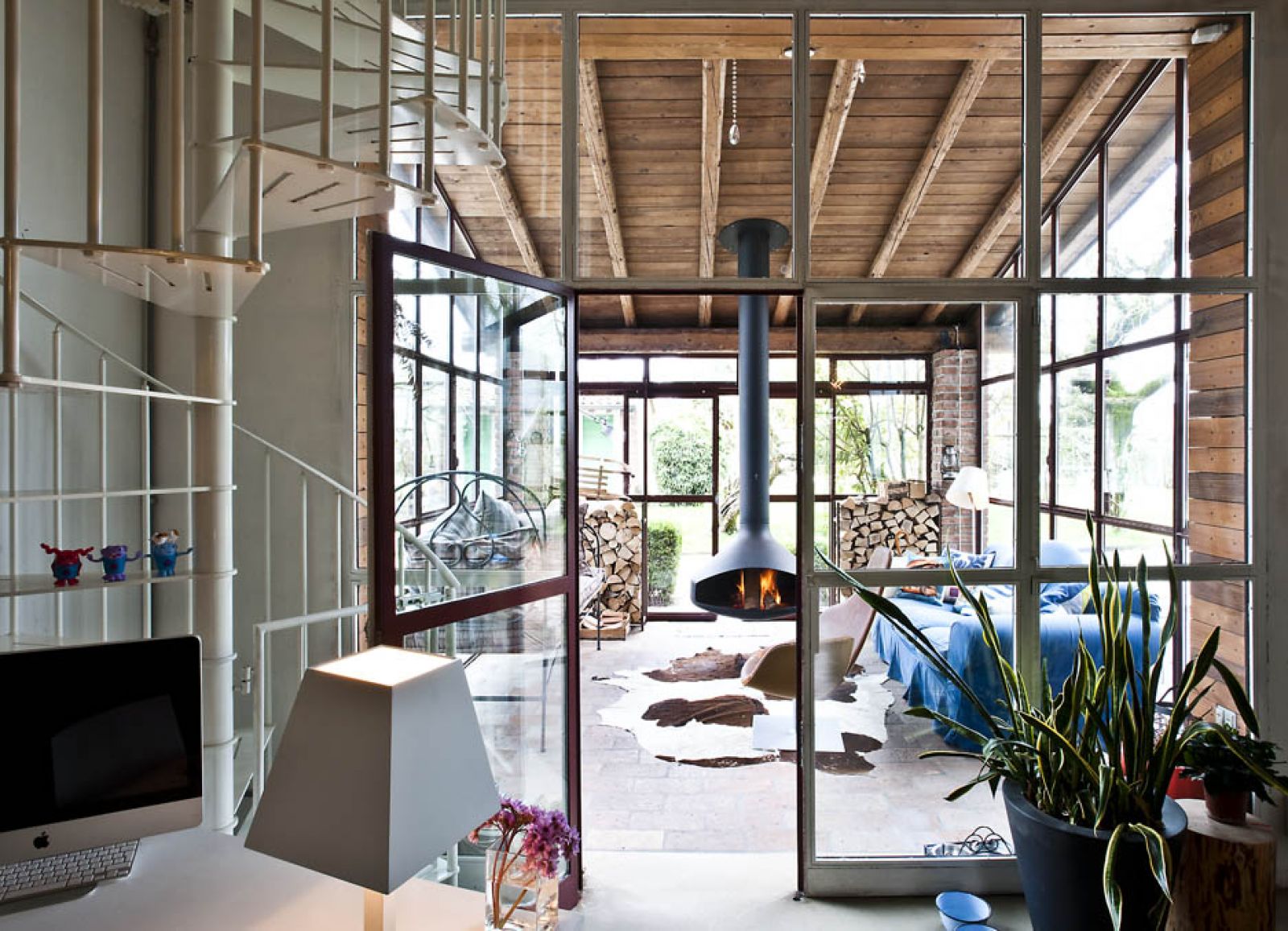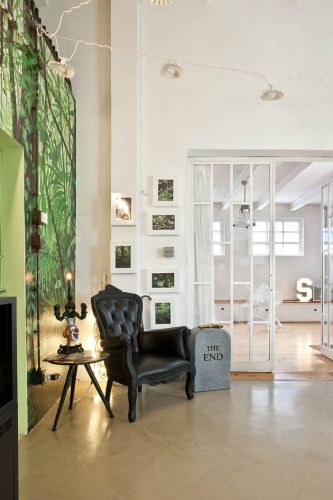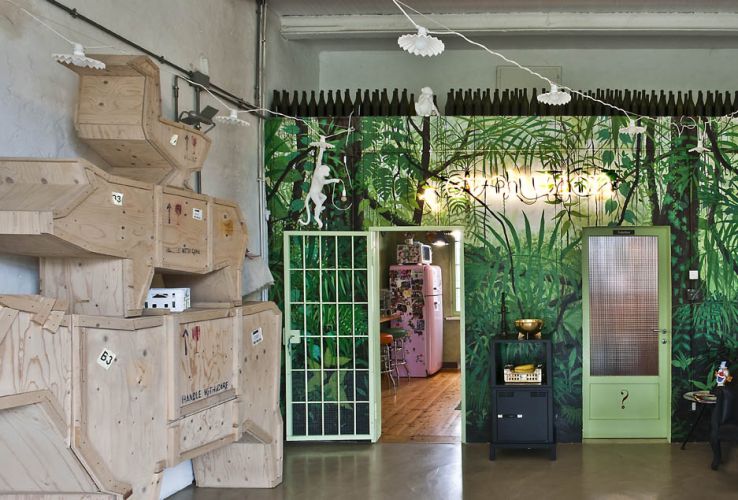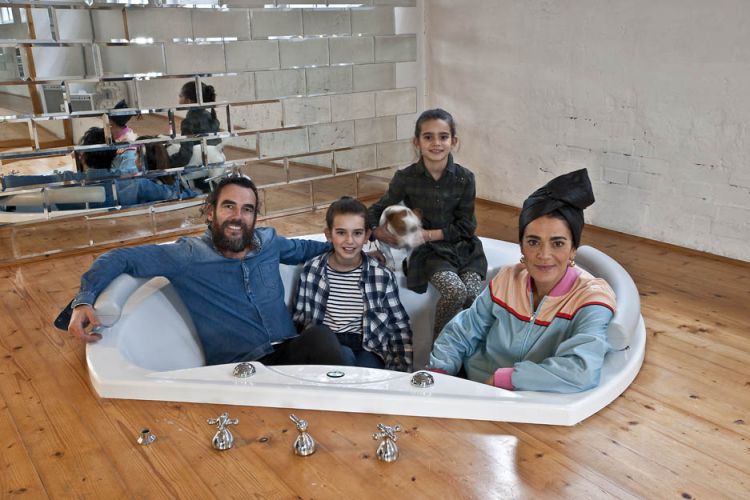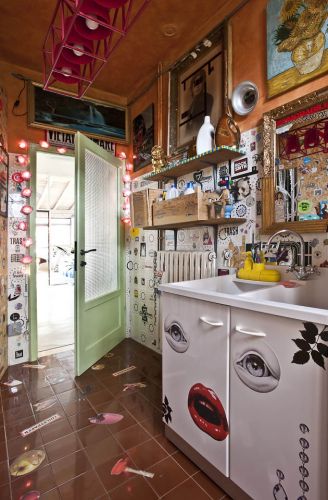Stefano: ‘I don’t like perfection. If everything is right, I’m bored.’ That’s why I don’t like Danish design, which is perfect to the last detail. I miss the irony, the artistic – though perhaps that sounds rather pretentious.’ He laughs. Stefano and his wife live in Viadana in an old farmhouse a few metres from his parental home and a stone’s throw from the family business. Stefano: ‘When I looked out of the window as a child, I would see this farm house. It was inhabited by an old lady who owned a lot of animals. When she died, my father bought it and subsequently left it empty for years. I was the one that started to fix it up, when I was 18, in view of the parties I wanted to throw. The traces of my youthful activities are still visible: the somewhat crudely stuccoed walls, the cheap pine wood floors. I leave them as they are. This house is full of “mistakes”. Nails that have been driven into the walls over the years, the painting no longer there; old electricity wiring; bare brick walls; a single small bathroom for the four of us; a kitchen comprising different elements that do not match. But to me, that’s the charm of this house. It’s a cosy mishmash’.
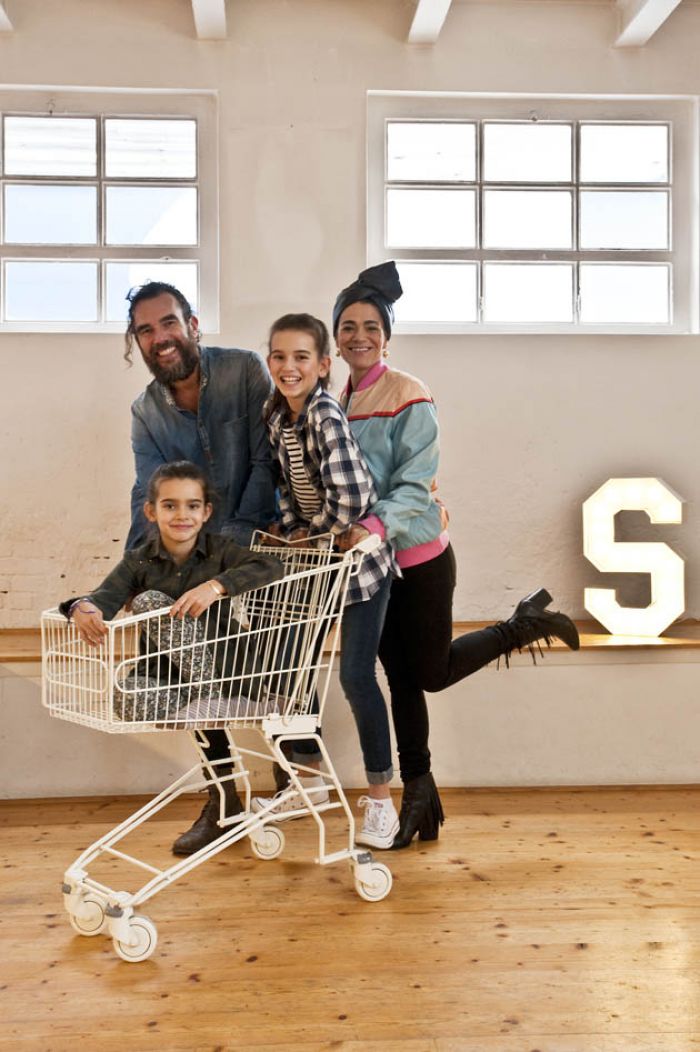
Funny Farm
The old farm was turned into a perfect family home. Robust, cosy, warm. Full of fantasy and humor. Much like the Seletti brand itself.
For someone whose products are on the shelves of MoMa New York’s design shop Stefano Seletti, 44 years old, married and the father of two adolescent daughters, is very down to earth. ‘I am of humble origins. My father grew up on bread and sardines and when I was 17, rather than sending me away to study, he took me with him on his work-related trips to communist China.’ Now, almost 30 years later, his father has retired and Stefano succeeded him. And successfully. These days, Seletti is considered one of the most innovative brands in the field of household goods, ranging from tableware and lamps to carpets, cabinets and garden furniture. And all of those objects distinguish themselves, thanks to Stefano’s approach, by a twist, a wink, something funny or unexpected.
The abundant glass vide provides beautiful views of the space. The white pouf is by Konstantin Grcic for Moroso, the Lounge Chair and Ottoman is by Eames via Vitra. The three theatre seats came from an old cinema in the neighbouring town of Casalmaggiore. The chest of drawers with black-and-white hounds tooth is called Trip Furniture. The stairs to the bedrooms were designed by Cristiano Mattioli. At the foot of the stairs is Charles Eames’s sculptural La Chaise.
De The kitchen is a merry mix of non matching items, ‘I don’t like perfection. If everything is right, I’m bored.’ The jungle wall was hand painted by Marcantonio Raimondi Malerba; he also designed the monkey-with-lamp that is part of the Seletti collection.
Studio Job
In 1964, Stefano’s father Romano began importing pans, wicker coasters, brooms and carpet beaters from Asia and selling them at wholesale to supermarkets in his own country. Stefano: ‘I began accompanying him on his trips when I was 17, something that, in retrospect, has proven to be a marvellous education. I learned to understand what people buy, what demand there is and what the best places are to have things produced.’ Importing these typical household items turned out to be particularly profitable, but with the passing of the years Stefano increasingly felt the need to give them a twist, or as he calls it: to ‘reinterpret’ the products.
In the spacious and brightly-coloured sitting room are a sturdy sofa by Diesel Living for Moroso, coffee table Porfido by Gufram and a cheerful rug from the Seletti Wears Toilet Paper collection.
Stefano: ‘I haven’t invented anything new, I’ve merely given existing articles a new look. Take the garden furniture I developed in collaboration with Studio Job. We’d been marketing traditional tables and chairs with Liberty-like wrought ironwork for many years and I thought it would be fun to give that classic design a twist. I got Job Smeets’s e-mail address through a friend and sent him a mail asking him if he and Nynke Tynagel would be willing to consider making a new version of the furniture. I’d admired them from a distance for quite some time and thought they were very innovative. It actually seemed unlikely that they’d be willing to take on such a job (three years ago, Seletti wasn’t as famous as it is today, PvD), but three minutes later I had my answer: they thought it would be great.’ The result is the Industry Collection, a set of garden furniture with an edge, recognizable at first glance but revealing symbolic patterns including figures such as gas masks, tea pots and butterflies on closer inspection.
Toilet Paper
Back to his colourful family home. Stefano describes it as una casa povera, a simple and sober two-storey dwelling with none-too-thick walls, exposed-beam ceilings and windows covered by sturdy shutters. From the outside, the building appears to be divided in two: one half has exposed brick walls, the other half is covered in white stucco. ‘The white section was originally a space where the hay for the animals was stored. We built a conservatory against it, which is now one of our favourite places in the house, along with the kitchen.’ Another popular spot is the room with a blue sofa by Diesel Living (in collaboration with Seletti, obviously) and the colourful carpet from the Seletti Wears Toilet Paper collection that Stefano produces in collaboration with artist Maurizio Cattelan and Pierpaolo Ferrari, the publisher of the – for insiders – famous magazine Toilet Paper. Stefano: ‘I’ve been a fan of the magazine since day one and wondered if there wasn’t something I could do with the fabulous, often pop-art-like images it publishes. A single meeting with Ferrari and Cattelan was all it took. We hit it off immediately and they loved my idea to print typical Toilet Paper images on tin, plastic and cotton and bring them into the homes of millions of people that way.’ When asked whether he would ever want to change anything about the house he replies with a smile. ‘Not me, but lately, my wife and daughters have begun sulking about the one bathroom the four of us have to share. Personally, I think it’s very cosy to stand there all brushing our teeth together, but I’m afraid they won’t accept the situation for much longer.’
The black chair is Smoke Chair by Maarten Baas, the entertaining side table in the shape of a tombstone is Toilet Paper’s The End for Gufram. The wooden, stacked cabinet Sending Animal is a design by Marcantonio Raimondi Malerba for Seletti.
The bathroom – ‘way too small,’ according to the three women – is abundantly decorated with Seletti stickers and souvenirs from Stefano’s trips. R \ The bedroom with old green linen closets from Stefano’s family.
photos Vega Gianni Basso
This production was published in WOTH No3. This issue is still available in english via Bruil & van der Staaij. Or get a subscription here!
Dutch versions of WOTH can be ordered in our shop and an NL subscription is available here.
